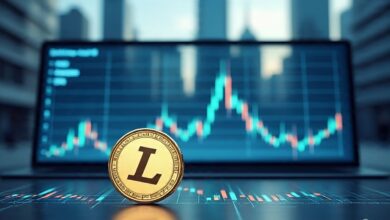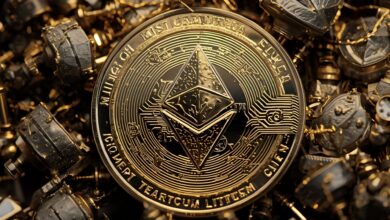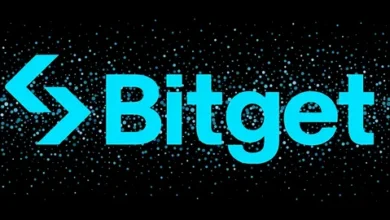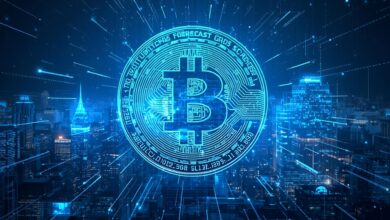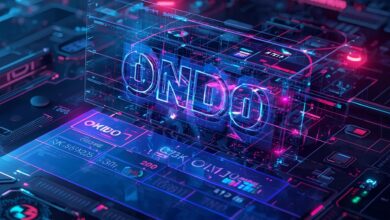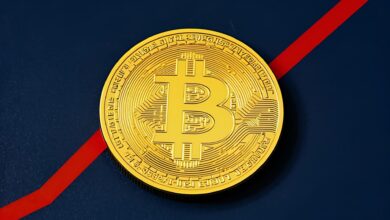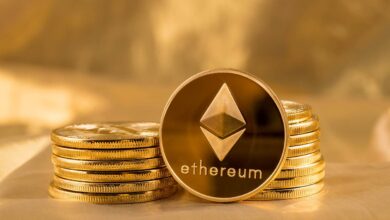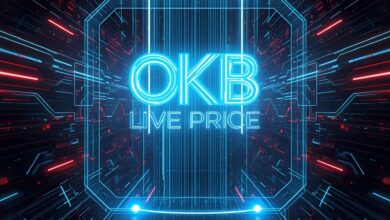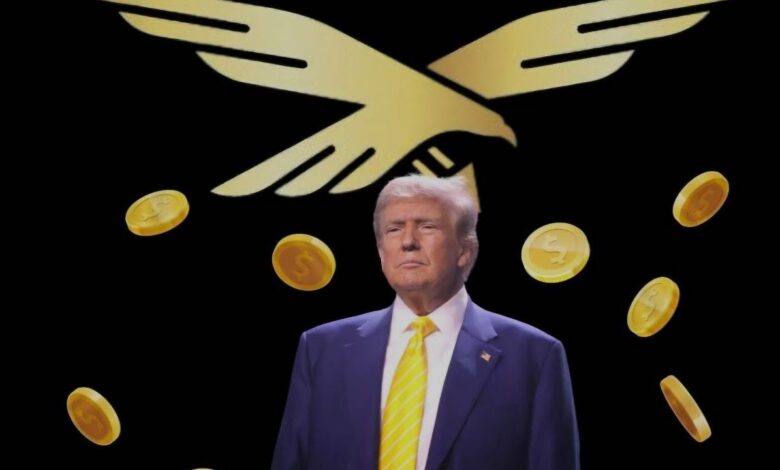
World Liberty Financial Trump Crypto, Power & Controversy
As World Liberty Financial, Trump. When former U.S. President Donald Trump and his family aligned themselves with a new decentralized finance (DeFi) venture, the crypto community took notice. But beyond the marketing and headline appeal lies a labyrinth of technical design, governance structure, ethical challenges, and regulatory risk.
In this comprehensive article, we will explore the origins of World Liberty Financial Trump, dissect its flagship products (WLFI token and USD1 stablecoin), evaluate its governance and financial structure, assess the criticisms and red flags, and look ahead at key debates shaping its future trajectory. We’ll weave in related concepts like decentralized governance, stablecoin regulation, tokenomics, power concentration, and conflict of interest to give you a full, human-level picture of how World Liberty Financial Trump is positioning itself in a crowded—and often skeptical—crypto landscape.
Origins and Purpose of World Liberty Financial Trump
Genesis of the Project and Trump Association
The concept behind World Liberty Financial Trump first gained public attention in late 2024, when Trump’s sons and crypto entrepreneurs announced a new DeFi venture that would blend traditional finance and blockchain-driven models. According to the Trump Organization, World Liberty Financial aims to “bridge the gap between traditional banking and blockchain-powered innovation.
From its earliest marketing materials, the project made clear its connection to the Trump name: Donald Trump himself is labeled as “Chief Crypto Advocate,” while his sons Eric, Donald Jr., and Barron are credited as “Web3 Ambassadors. This branding aligns with a broader strategy: combining political stature with a crypto narrative to inspire confidence (or curiosity) among investors.
The project’s stated mission is to make DeFi and stablecoins more accessible, especially by promoting a U.S.-dollar–pegged blockchain-based asset. Some industry observers see this as a push to maintain or extend U.S. dollar dominance in an era when many alternative stablecoins and digital currencies are challenging traditional banking norms.
Fundraising, Token Launch, and Early Hype
Early fundraising for the project was aggressive. By mid-2025, World Liberty Financial had reportedly raised over $550 million through private sales of governance tokens. The demand was so strong that in October 2024, when the token sale began, the project’s website crashed under heavy traffic as tens of millions of visits surged in hours.
Initially, the WLFI token was non-transferable, meaning holders could not freely trade it on exchanges—its primary role was governance rights over the platform. But in July 2025, a governance proposal passed to make the token tradable and liquid, opening a new chapter for the project’s public trading and valuation.
The token officially began trading on September 1, 2025. Although there was initial hype, market behaviors have already shown volatility and skepticism about the token’s long-term value.
Products and Architecture — WLFI and USD1
WLFI Token: Governance, Tokenomics, and Control
WLFI serves as the governance token for World Liberty Financial Trump, granting holders the ability to vote on decisions such as protocol changes, treasury allocations, and partnerships. During its non-tradable phase, the token was concentrated heavily in the hands of insiders—particularly the Trump family and allied entities.
A key point of contention is how WLFI’s tokenomics heavily favor insiders: the Trump family is entitled to 75% of token sale revenues and 60% of operational revenue from the project. This alignment gives insiders a disproportionate share of upside while diluting broader stakeholder influence—a structure critics argue undercuts decentralization.
WLFI’s governance rules also include constraints: no single wallet can wield more than 5% of governance power. That is a built-in check designed to limit concentration of influence. Yet given insider holdings, the practical power dynamics may still heavily tilt toward insiders.
USD1 Stablecoin — Peg, Reserves, and Strategy
Alongside WLFI, the project introduced a stablecoin named USD1. The aim is for USD1 to function as a dollar-pegged token, backed by reserves of U.S. treasuries, cash equivalents, and other highly liquid instruments.
The strategic value of USD1 is significant: if successful, it would anchor much of the traffic and capital in the World Liberty ecosystem, acting as the settlement medium for lending, borrowing, and token transactions. However, stablecoins operate under intense regulatory scrutiny. The project already faces pressure from regulators and critics to ensure monthly attestation and audit transparency.
A recent report from NYDIG flagged that the project has fallen behind on publishing monthly attestation reports, with the latest available attestation dating to July 2025. That delay is deemed problematic for a stablecoin with growing adoption.
Governance, Control, and Power Dynamics

Centralization vs. Decentralization Debate
One of the most heated debates around World Liberty Financial Trump centers on the tension between its DeFi branding and the highly centralized control structures backing it. Critics argue that the strong insider privileging—75% revenue share, 60% operational control, early lockups—runs counter to the ethos of decentralization.
Even though WLFI holders can vote, the power asymmetries are stark. Because insider holdings remain high and external governance power is capped at 5% per wallet, insiders effectively dominate outcomes in many practical scenarios.
That said, supporters argue that some degree of centralized oversight is necessary in early stages to maintain stability, security, and brand trust. After all, many DeFi systems have faced governance attacks, mismanaged upgrades, and liquidity crises. The question is whether World Liberty Financial Trump is too centralized in a way that undermines stakeholder confidence or true participation.
Conflict of Interest and Ethical Risks
Because World Liberty Financial Trump is deeply intertwined with the Trump family—and because Donald Trump occupies a public office—the project has been criticized for raising profound conflicts of interest. The project’s structure gives Trump-adjacent entities both political influence and financial gain, amplifying concerns about the blending of public office and private enterprise.
Instances that fueled scrutiny include a $2 billion pledge from an Abu Dhabi–state–backed company into USD1, shortly followed by U.S. government approval of advanced chip exports to that firm. The timing and coordination drew sharp criticism from ethics analysts.
Another example: the transfer of governance control from the original crypto founders to a Trump-controlled entity (WLF Holdco LLC) happened quietly in January 2025. The Trump family effectively claimed a 60% stake while sidelining initial founders.
Public disclosures show Trump earned $57.4 million in a 12-month period ending December 2024 from World Liberty. That earning, from a crypto firm so tightly entwined with the operations of government policy, raises further red flags in the minds of watchdogs.
Collectively, these interdependencies have led some analysts to call World Liberty a case study in “eviscerating the boundary between private enterprise and government policy.
Financial Mechanics, Risks, and Market Realities
Valuation, Token Fluctuations, and Market Behavior
When WLFI went tradable on September 1, 2025, its valuation rocketed: early listed trades ranged from $0.21 to $0.40, significantly higher than early backers had paid. Yet volatility was immediate: after peaking, WLFI dropped over 20% in market value in the days following.
The Trump family’s holdings of 22.5 billion WLFI tokens, at trading prices, translated into a paper windfall of roughly $5 billion. But most of those tokens remain locked under vesting schedules—meaning the value is theoretical, not liquid.
Critics warn that WLFI’s early price moves are driven more by branding hype and momentum than by fundamentals like revenue or product adoption. Indeed, some analysts have argued that the token’s core utility—governance rights—offers ambiguous value to average users.
Operational Risk, Attestation Delays, and Regulation
While building out DeFi products and stablecoin infrastructure is ambitious, World Liberty Financial Trump faces steep operational and compliance risk. The failure to maintain timely monthly attestation reports is a red flag, especially for a stablecoin with growing market share.
Additionally, the incoming GENIUS Act in the U.S. may curtail stablecoin issuance by decentralized entities—potentially forcing USD1 to be issued by a regulated bank or state-qualified entity. That could require structural shifts and limit the business model.
International scrutiny is also mounting. For instance, more than 78% of USD1’s supply appears to be concentrated in foreign exchange addresses, raising concerns about systemic exposure and cross-border regulatory arbitrage.
Finally, any misstep in transparency, governance, or risk management may dramatically erode stakeholder confidence. Because the project bridges political branding and financial services, the reputational stakes are especially high.
Strategic Moves, Roadmap, and Future Outlook
Debit Card, RWA Tokenization, and Ecosystem Growth
To expand utility and everyday access, World Liberty Financial Trump is planning to launch. A crypto debit card that bridges USD1 and WLFI holdings with daily spending. The debut pilot is expected in Q4 2025 or Q1 2026. Another upcoming initiative is RWA (Real World Asset) tokenization—tying real-world assets such as real estate or infrastructure to the digital tokens. WLFI’s governance is expected to play a role in selecting and managing such assets.
Additionally, the project has aligned with ALT5 Sigma, a publicly traded company. WORLD Liberty plans to build a $1.5 billion WLFI treasury that ALT5 will hold. Effectively turning that stock into a proxy for WLFI exposure. Eric Trump is slated to join the ALT5 board. These moves aim to deepen user engagement, expand capital flow, and link blockchain markets to traditional finance—if executed rigorously.
Challenges on the Horizon
Despite momentum, World Liberty Financial Trump faces formidable hurdles. Regulatory clampdowns (especially in the U.S.), governance backlash, and skepticism over token utility are ongoing risks.
Another challenge is maintaining liquidity and stability in WLFI and USD1 markets—especially under stress. If USD1 fails to maintain its peg or WLFI’s trading becomes illiquid, the entire ecosystem could unravel.
Moreover, the conflict-of-interest critiques will not fade quietly. Future scrutiny from ethics boards, congressional oversight, and media investigations can cause policy backlash or reputational damage.
Finally, the project must demonstrate real adoption—not just hype. Its technical infrastructure, product usability, and user trust will determine whether World Liberty Financial Trump is merely a headline or a lasting player in DeFi.
Overall Assessment — Strengths, Weaknesses, and Implications
Strengths and Opportunities
World Liberty Financial Trump holds several competitive advantages:
-
Brand power: The Trump name commands media attention, which can drive early user interest and capital inflows.
-
Capital backing: Early fundraising success gives the project runway to build core infrastructure.
-
Integrated model: By combining governance (WLFI), a stablecoin (USD1), and real-world expansion (tokenization, debit card), the project offers a full-stack vision.
-
Strategic alliances: Partnerships with ALT5 and connections to large capital flows support ambitious growth.
Weaknesses, Risks, and Red Flags
However, several structural issues cast doubt:
-
Overcentralization: The insider-favored token structure challenges the “decentralized” label.
-
Conflict of interest: The entwining of project and political power presents ethical perils and legal risk.
-
Regulatory uncertainty: U.S. and global crypto policy could significantly constrain stablecoin operations.
-
Transparency lapses: Delays in attestations and governance opacity weaken trust.
-
Fragile valuation: Much of the Trump family’s gains are locked or theoretical; token price is vulnerable to hype cycles.
Broader Implications for Crypto and Governance
The saga of World Liberty Financial Trump is more than just another crypto project. It tests the boundaries between public office, private enterprise, and emergent financial systems. If the model succeeds, it may embolden other politically connected ventures to replicate a hybrid model. If it fails, it will reinforce warnings about centralization, ethics, and token-based corporate control.
For DeFi more generally, this project underscores. How governance models, power distribution, and ethical transparency are as crucial as code and liquidity. The trust of users, regulators, and institutions will pivot on how these controversies are addressed in real time.
Also Read: Trump’s Tariffs May Drive Bitcoin to $250K by 2025
Conclusion
The saga of World Liberty Financial Trump is still unfolding. Born from a potent mix of political branding, crypto ambition, and financial engineering, it has already captured headlines—and scrutiny. Its core products, WLFI and USD1, aim to fuse governance and stablecoin dynamics. But their success hinges on transparency, adoption, and regulatory navigation.
Strengths like name recognition and early capital are counterbalanced by risks of overcentralization, conflicts of interest, and fragile valuations. The project’s evolution will test not only its own viability but also broader assumptions about. How much political capital belongs in the world of decentralized finance.
For now, World Liberty Financial Trump remains a high-stakes experiment at the crossroads of money, power, and innovation. Stakeholders—whether users, regulators, or critics—will be watching closely.
FAQs
Q: What is the relationship between Donald Trump and World Liberty Financial?
Donald Trump is positioned as “Chief Crypto Advocate” in the project’s materials, while his sons and Trump-controlled entities hold significant equity and governance allocations. The project is deeply associated with his personal brand, and he reportedly earned $57.4 million from the venture in a 12-month period ending in 2024.
Q: How does WLFI token governance work?
WLFI is a governance token granting holders voting rights over protocol changes, funding allocations, and development choices. Although its early phase restricted trading, users now can trade WLFI. However, governance power caps (e.g. 5% per wallet) and high insider holdings raise questions about how democratic or decentralized the governance truly is.
Q: What are the major criticisms of World Liberty Financial?
Q: What is USD1 and how does it compare with other stablecoins?
USD1 is the project’s dollar-pegged stablecoin, intended to be backed by reserves of cash and U.S. treasuries. Unlike many stablecoins, it’s tied into a governance-token ecosystem (WLFI). However, its transparency and reserve audit discipline are under scrutiny, and regulatory proposals may require it to be controlled by a regulated bank or entity.
Q: Is investing in WLFI or USD1 safe for ordinary users?
Investing in WLFI or USD1 carries high risk. The token is subject to market volatility, and much of the project’s structural gains accrue to insiders. Stablecoins face regulatory uncertainty and must maintain rigorous audits to maintain trust. For most users, these risks may outweigh potential reward unless structural transparency, compliance, and governance evolve significantly.
